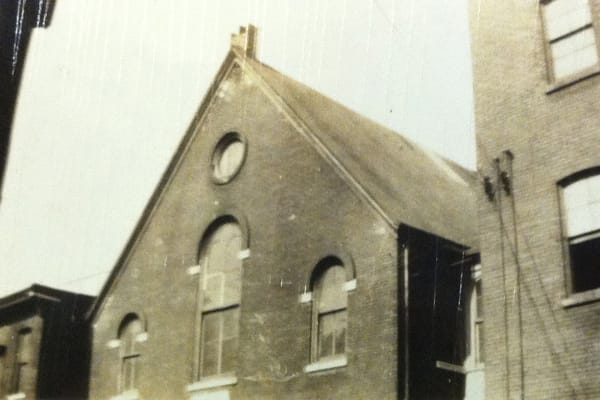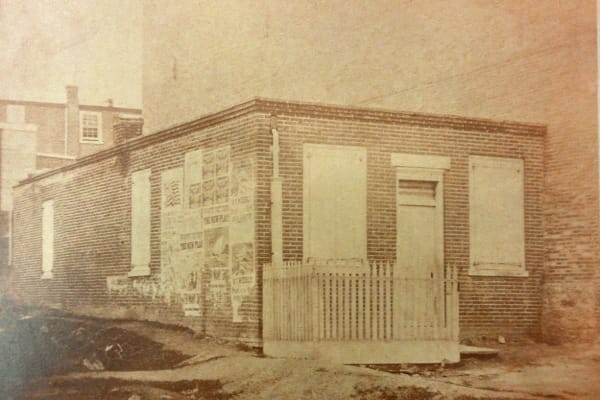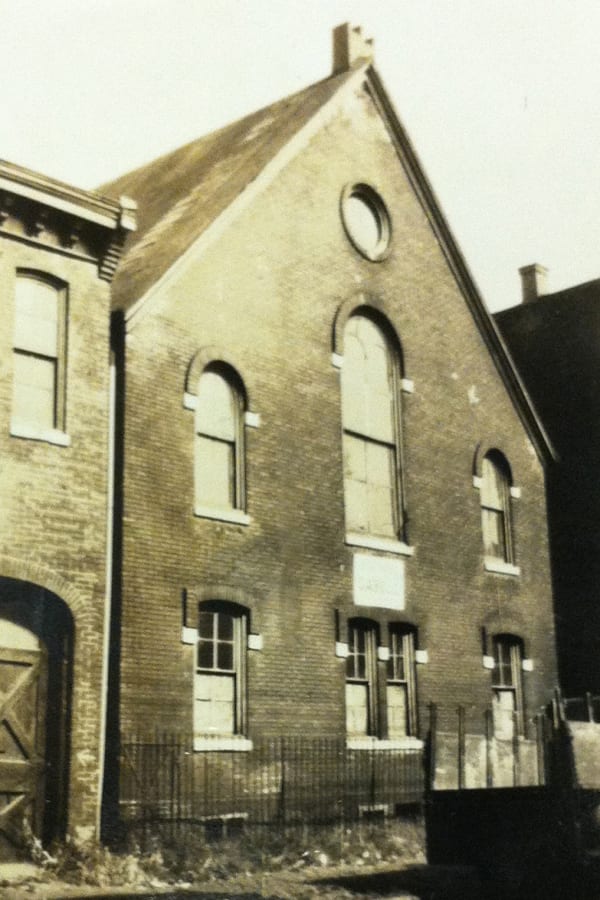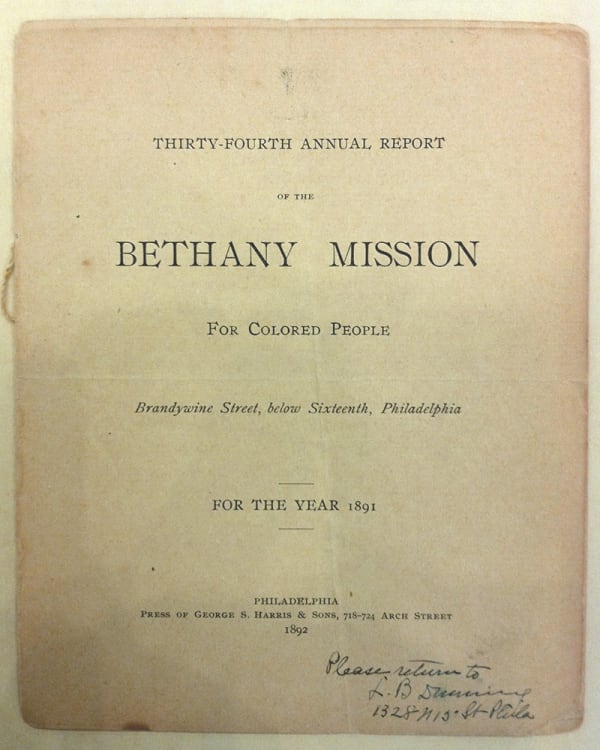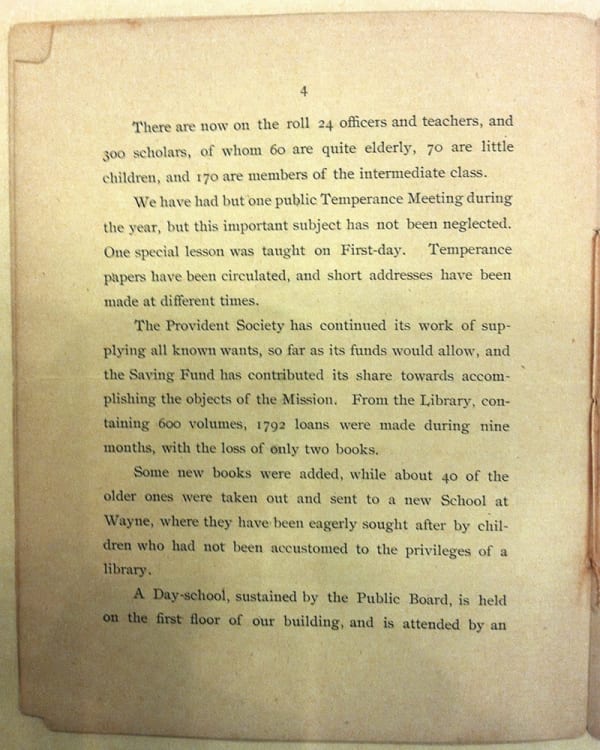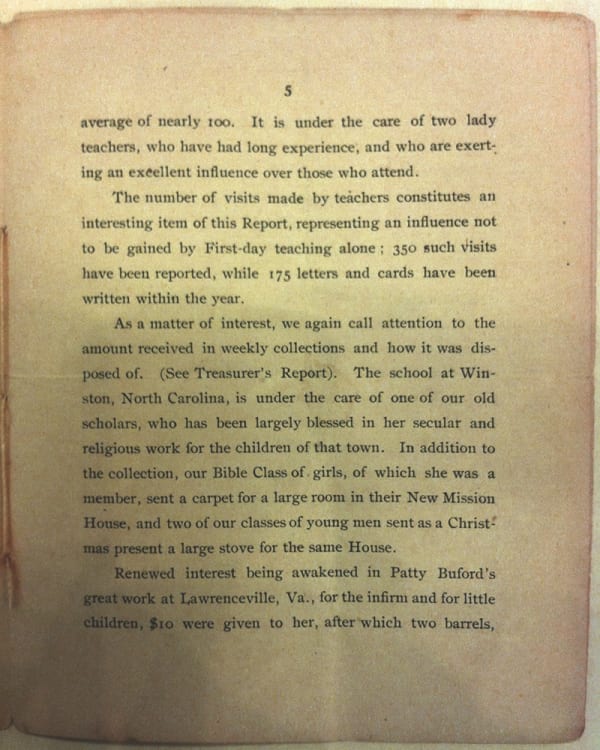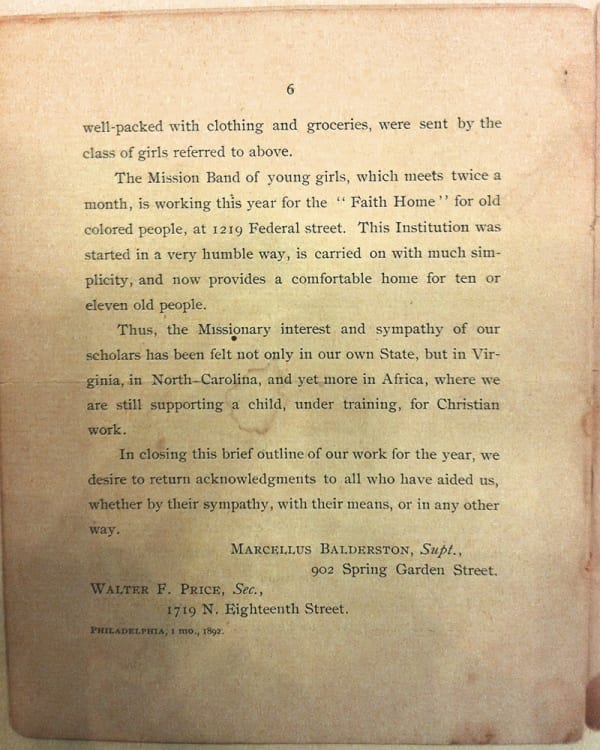The Bethany Mission for Colored People was founded in the mid-1850s and has been located at Brandywine Street, near 16th Street in Philadelphia, PA since 1869. According to its constitution, the Mission was to be non-denominational with the objective of “moral and religious education and general elevation of the Colored people by means of a Mission Sabbath School.” The Sunday School welcomed students from all ages: “little children,” “intermediate,” and the “quite elderly.”
The mission was dedicated to serving a diversity of ages, social and economic classes, creeds, and levels of education — even the teachers varied in their personal faiths and methods and practices in education — and tolerance was seen as an important element along with new methods and techniques.
Attendance at the mission peaked in the 1870s with enrollment close to 500 pupils. The mission began a slow decline starting in the 1880s that continued until its close in the 1930s due to the rise of Black churches and increased public education for African-Americans.
For over eight decades the Mission successfully reached out to the local African-American community supporting the spread of literacy and religious education and providing community support through various social assistance programs. Teachers often combined responses to social and community needs with opportunities for learning. For example, when students needed clothing collections were made and instructional sewing lessons were initiated.
Marcellus Balderston (1842 – 1935) first became involved in the mission in 1857. Balderston became superintendent of the mission in 1860 at 18 years old, a position he held until his death in 1935. Balderston’s family was heavily involved in the mission. His siblings John, Rachel, and Lydia, his wife, Cecilia Wright, and niece, Martha B. Livezey were all teachers at the Mission. The mission was focused on service before creed and welcomed Hicksite, Gurneyite, and Wilburite Quakers as well as non-Friends. Balderston was listed as an original member of the Friends’ Historical Association (FHA) and helped plan the merger of the FHA with the younger Friends’ Historical Society of Philadelphia.

